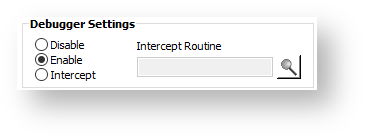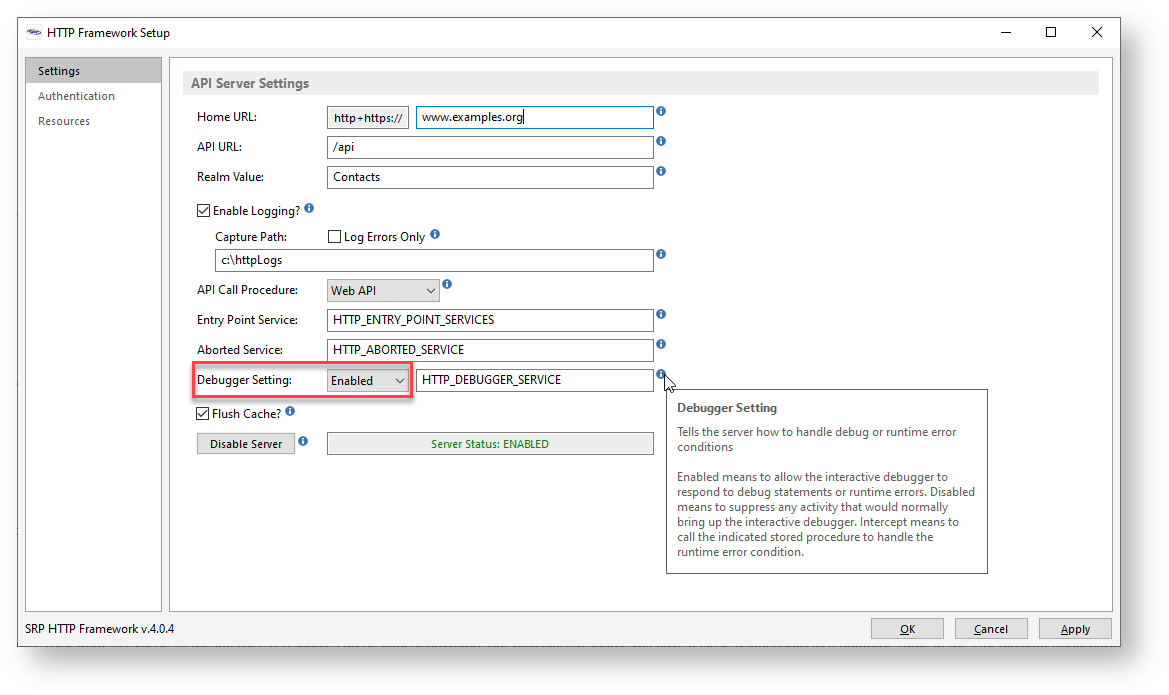Debugging an API is essentially no different than debugging any stored procedure. Therefore, a developer can simply put a debug statement in the code. However, this might not be desirable if the web APIs are being accessed by regular users. This article will provide some ideas for debugging APIs with minimal impact toward other users.
First Things First
In order to interact with the visual debugger there are a couple of configuration steps that are required.
1. Run the Engine Server in "Debug" Mode
The first step is to make sure you are running the Engine Server from a command prompt (aka "debug" mode). In our Testing for Success article, we provide a sample screen shot of how to launch the Engine Server from a command prompt. It is important to remember that if the Engine Server is also configured to run as a Windows Service then this will need to be stopped in order for the Engine Server in the command prompt to run successfully. Further information can be found in the official 103-966 OpenInsight OEngineServer Configuration.pdf document.
2. Enable the Debugger
The second step is to make sure the engines handling the HTTP request are set to enable the visual Debugger. By default, headless engines will use the Debugger Settings from the Database Manager:
However, there might be times when the production database wants to avoid the Enable setting but the API developer needs to use the visual Debugger. For reasons like this, the HTTP Framework Setup form provides the same options as the Database Manager but this setting will only affect those engines handling HTTP requests:
Triggering the Debugger
As previously noted, a developer can simply embed a debug statement in the API code but this would affect all requests. So there needs to be a way to safely trigger the debugger. In traditional OpenInsight development, developers could check for unique conditions such as the values in the @USERNAME or @STATION system variables. All HTTP requests, however, will always be handled by the same username and station.
One way to introduce unique conditions is to add custom parameters to the API request. API testing tools like Postman make it very easy to add custom parameters. We recommend updating the AdditionalValues string from the OECGI4 registry key to include HTTP_DEBUG. Doing so will tell the OECGI to pass through a request header with the name Debug. You could, of course, create any name you want.
The HTTP_MCP controller routine already has code that checks for a value assigned to the Debug request header:
// Engage the debugger if requested.
If HTTP_Services('GetRequestHeaderField', 'Debug') then Debug
This same code could be copied anywhere and adapted as needed (e.g., change the name of the header field or check for a specific field value).

